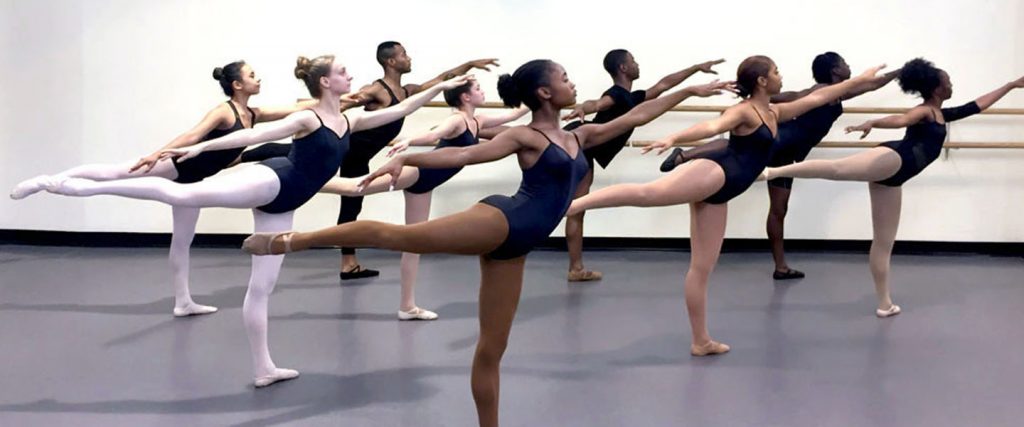Art Leaders Impacting Local Communities: Spotlight on Zenetta Drew

This spotlight series focuses on professionals at cultural organizations across the country who are making a difference in their communities. The following is a lightly edited excerpt of the conversation.
Local cultural institutions are critical for the arts to thrive. These organizations help develop and showcase artistic talent, provide communities with a forum to experience the arts and also contribute to a city’s economy and identity. That is why Bloomberg Philanthropies has supported more than 500 small and medium-sized organizations through our Arts Innovation and Management Program (AIM).
In this interview, Ethan Joseph of the Bloomberg Philanthropies Arts team talks with Zenetta Drew, Executive Director of the Dallas Black Dance Theatre and former participant of the AIM program, about what the theatre has meant to the Dallas community. The following is a lightly edited excerpt of the conversation.
ETHAN JOSEPH: Tell us about the Dallas Black Dance Theatre.
ZENETTA DREW: The Dallas Black Dance Theatre is the only predominantly black professional dance company in a five-state area. We’re one of the top black dance companies in the nation. These companies of color originated as a need to create social justice. In this country, we have a large legacy of divide that cuts across everything from arts to religion to economics, and so in order to ensure that the cultures and the arts of people in this country are represented, the need for companies of color definitely exists. Our dancers have performed for Her Majesty The Queen, and President Nelson Mandela.
JOSEPH: How did you become involved with the company and what expertise did you bring to the organization?
DREW: I started as a volunteer nearly 30 years ago and I came from the for-profit business world. I did not know a lot about nonprofits. I did know that the business infrastructure that supported its programs could change the outcomes for the vision of the founder, Ann Williams. Her vision for the dancers was for them to become salaried, to have a suitable facility, and to be able to elevate the artistic programs to national and international recognition. My vision became to marry the excellence that she was achieving in the art with business excellence and become an exemplary partnership model for non-profits.
JOSEPH: How did you apply your business background to managing a non-profit?
DREW: When I began, most people who ran arts organizations were artists who had great artistic skills but did not necessarily know how to bring business structure to the organization. I focused on developing a strategic plan and executing a business plan in which we only spend what we have. And if we don’t have it, we don’t spend it. That means there’s an artistic challenge to create excellence with limited dollars and many times, we’ve been able to produce much higher excellence by insisting that budget management was a top priority.
When I started, there was a $100,000 plus deficit. Now we operate deficit free. In addition, our budget has grown 20 times what it was at $200,000 annually. The dancers have been full-time salaried dancers for the last 31 years on 11-month contracts, with full benefits for more than 20 years. We have been able to increase the reputation of the organization from a local and regional organization to an institution of international status, having performed at two Olympics. The recent strategic plan seeks to continue to elevate our position as a premier modern dance company in the nation.
JOSEPH: How have you worked with members of the local business and arts community in fueling such impressive growth?
We have heightened our level of collaboration and partnership and that, of course, brings donors, supporters and audiences. The community in Dallas has supported the growth of the organization. That’s everything from the corporations, the Foundations, the volunteers, the community-based organizations, the religious community, the arts community and the city of Dallas. We do collaborations with the opera, the symphony, all of the large institutions, but we also do it with all of the smaller institutions and, of course, with organizations of color.
JOSEPH: Can you tell us about the impacts of your leadership on the community?
DREW: We have been able to do everything from securing a permanent facility in the Dallas Arts District, renovating a historic building as the only arts organization of color in the billion dollar Dallas Arts District, to getting a street named to honor our Founder Ann Williams. One of the things that we have worked very hard on is to ensure that every person who comes within our space, or within our environment, or to a performance actually ends up feeling like they’re a part of the family. That every aspect of the organization leads by a value of inclusion, and all who interact with us leave inspired, energized and motivated.
Watch this video interview for more with Zenetta:
To learn more about the Dallas Black Dance Theatre, click here.
Read the first blog in this series with the CEO and President of the Chapman Cultural Center in Spartanburg, South Carolina: Art Leaders Making Impacts in Local Communities: Spotlight on Jennifer Evins